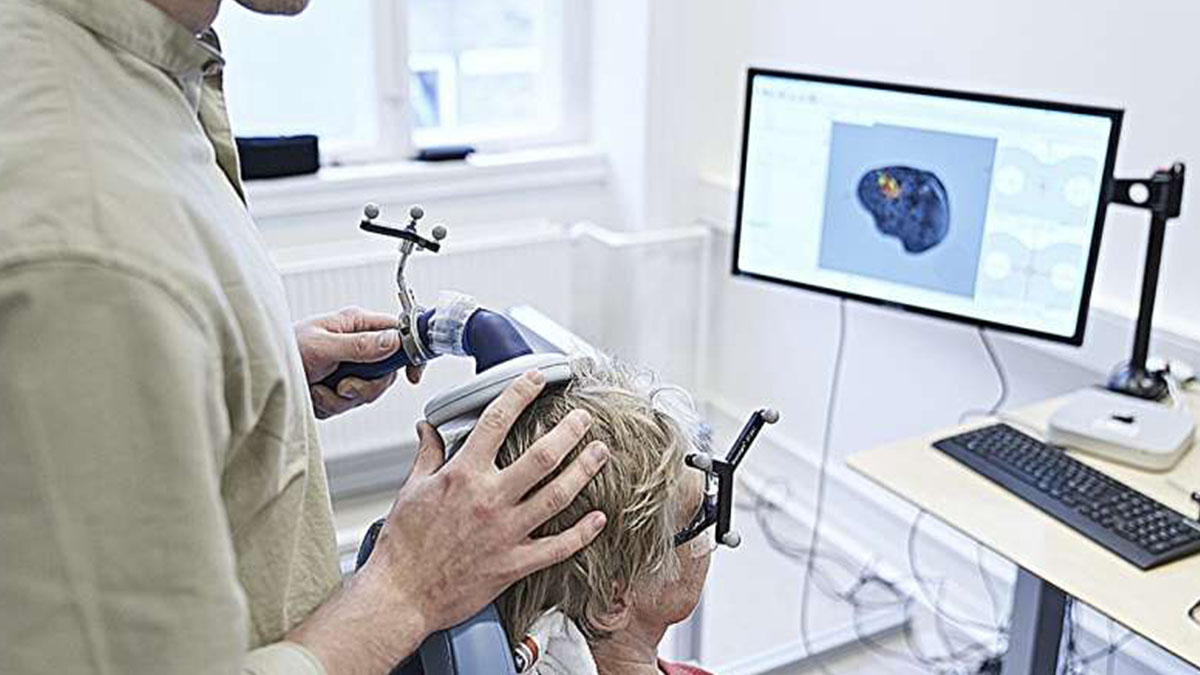
Recent research from the University of Copenhagen has revealed an innovative method to enhance motor skill learning. By combining carefully timed electrical and magnetic stimulations, researchers have demonstrated a significant improvement in the brain’s ability to learn and adapt. This groundbreaking approach may hold immense potential for rehabilitation and even elite sports performance.
How Electrical Stimulation Enhances Learning
The study focuses on using paired electrical and magnetic stimulations to prime the nervous system. This method involves delivering electricity to a nerve in the forearm, followed milliseconds later by magnetic stimulation to the motor area of the brain. When performed repeatedly with precise timing, these paired stimulations significantly boost motor learning.
The Experiment in Detail
- Electrical Stimulation: A nerve in the forearm receives a small electrical impulse.
- Magnetic Stimulation: Moments later, a magnetic coil applies stimulation to the brain’s motor area.
- Repetition: The process is repeated every 10 seconds during the training session.
This dual stimulation creates minor, involuntary hand twitches in participants, who otherwise report feeling minimal discomfort. The results show remarkable improvements in their motor learning abilities.
Results of the Study
In experiments led by Jonas Rud Bjørndal and Jesper Lundbye-Jensen, participants enhanced their motor task performance by up to 30% when receiving stimulation before training. By comparison, those who trained without stimulation improved by an average of 20%. These findings, published in Nature Communications, underscore the powerful effect of combining stimulation with training.
The Science Behind Motor Learning
Brain Plasticity
The brain’s ability to adapt known as plasticity is crucial for learning new skills. Whether playing a musical instrument or mastering athletic techniques, the nervous system must physically change to support memory and learning.
“These changes in the nervous system allow us to retain and recall what we’ve learned,” explains Lundbye-Jensen, emphasizing that motor skill learning relies heavily on brain plasticity.
Timing is Everything
The researchers found that precise timing is critical for the effectiveness of paired stimulations. If the timing is slightly off, the results are far less pronounced. This discovery highlights the importance of fine-tuning stimulation protocols to maximize the benefits of brain plasticity.
Applications and Future Potential
Rehabilitation
This method could revolutionize rehabilitation strategies for patients recovering from nervous system injuries. Enhanced training techniques may help individuals regain mobility more effectively, providing a new tool for physiotherapy and eldercare.
“There are people in society who face significant challenges in regaining mobility. If our research can make their training even slightly more effective, it would be deeply rewarding,” says Lundbye-Jensen.
Elite Sports
In addition to rehabilitation, stimulation techniques may benefit athletes in disciplines requiring explosive muscle power. By improving motor learning, these methods could give athletes an edge in performance. However, the specialized equipment is currently available only in research settings, limiting widespread access.
Limitations and Ethical Considerations
While the study shows promising results, it is not a shortcut to athletic excellence. Lundbye-Jensen cautions, “You won’t become a champion simply by receiving weak electrical currents. Training remains essential, but stimulation can enhance the benefits significantly.”
Looking Ahead
The research team plans to expand on their findings by exploring other applications of this technique. With further development, electrical and magnetic stimulation may become a cornerstone in rehabilitation and training programs.
References
- Bjørndal, J.R., Lundbye-Jensen, J., et al. (2024). Hebbian priming of human motor learning. Nature Communications. DOI: 10.1038/s41467-024-49478-5
- Provided by the University of Copenhagen
